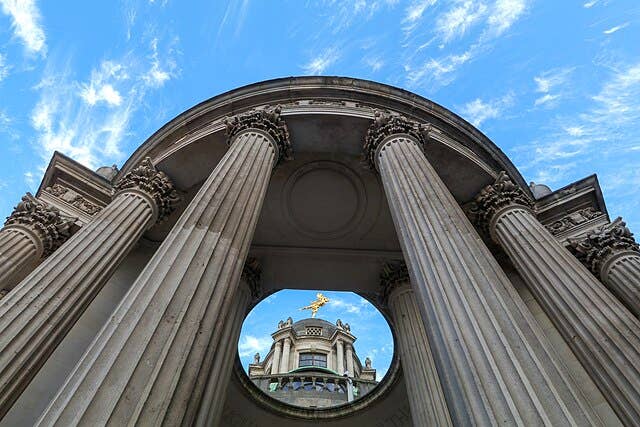Crown Jewels and Dark Tales: Inside the Tower’s Stone Walls
Step with us into history at the Tower of London. Explore royal treasures, dark dungeons, political intrigue, and centuries-old legends within its ancient walls.
The Tower of London has a dark and chilling history spanning centuries. Often, visitors to this iconic castle and World Heritage site aren’t aware of the nearly 1,000 years of history contained in what is now more of a complex than a single tower.
In the 1070s, William the Conqueror, who led the Norman Conquest of England in 1066, embarked upon an ambitious construction project—a massive stone fortress in London. Known as the White Tower, it loomed over the London skyline, symbolizing the Norman control over the defeated Saxons.
Over time, subsequent monarchs expanded and adapted the Tower for various purposes. Henry III and Edward I added defensive walls, smaller towers, and an enlarged moat, transforming the Tower into England’s largest and strongest concentric castle. They also expanded the inside, adding resplendent royal quarters and luxurious spaces.
The Tower served as much more than just a fortress. For nearly 1,000 years, the Tower served as a prison. Within its walls, countless numbers of people were imprisoned, tortured, and executed (or murdered), including King Henry VI and the Princes in the Tower—the sons of King Edward IV, Anne Boleyn, Sir Thomas More, Lady Jane Grey, and Catherine Howard. Criminals, political rivals, and even royalty met their grim fate within its walls.
Today, the Tower of London is one of England’s most visited tourist attractions, yet it still serves the monarchy. The King maintains a military garrison within the Tower. A resident governor occupies the 16th-century Queen’s House on Tower Green. The governor oversees the yeoman warders, also known as “beefeaters.” They wear Tudor uniforms and live in the tower. These yeoman warders are responsible for guiding tours of the Towers for its two to three million visitors each year.
Visitors can discover the fascinating history of the Crown Jewels, which have been stored and displayed in the Tower since 1661. The Crown Jewels reside in the Jewel House at the Tower under armed guard. The collection features 23,578 gemstones and includes items that are still used in royal ceremonies today. View some of the collection highlights, such as Queen Elizabeth’s crown, in which the Koh-i-Noor diamond is set. See the Prince of Wales’ Investiture Coronet, the Imperial State Crown, the Sovereign’s Scepter made for the coronation of Charles II in 1661, and more.
Meet the legendary Tower Ravens—the guardians of the Tower. It is believed that Charles II was the first to insist that the Tower’s ravens be protected after he was warned that the crown (and the Tower) would fall if the ravens left. Ravenmaster Barney Chandler cares for the Tower’s ravens, ensuring that they dine daily on their special menu of mice, rats, and assorted raw meats.
William the Conqueror would be pleased to find that his White Tower, an outstanding example of Norman architecture, has been carefully cared for in the last nearly 1,000 years. The White Tower is home to the beautiful 11th-century Romanesque sanctuary, Chapel of St. John the Evangelist.
The White Tower also houses the historic Royal Armories collections, which feature unique and exceptional armor and arms on display, including the royal armors of Henry VIII, Charles I, and James II.
On the tower's top floor sits an original executioner’s block from the 18th century, along with an axe that may date back to Tudor times. The basement is thought to be the site of torture and interrogation of many well-known political prisoners, like Guy Fawkes.
Visiting the Tower of London is a captivating journey through centuries of history. From the glittering Crown Jewels to the echoes of political conspiracies and machinations, this iconic fortress offers an unforgettable experience. Whether you’re a history enthusiast or simply curious, immerse yourself in the tales of kings, queens, and intrigue within these ancient walls
If you'd like to explore the Tower of London with us, we are heading there as part of our NumisTravel Tour of London and Wales from September 3 through September 10, 2025. Learn more about the tour and register here.









